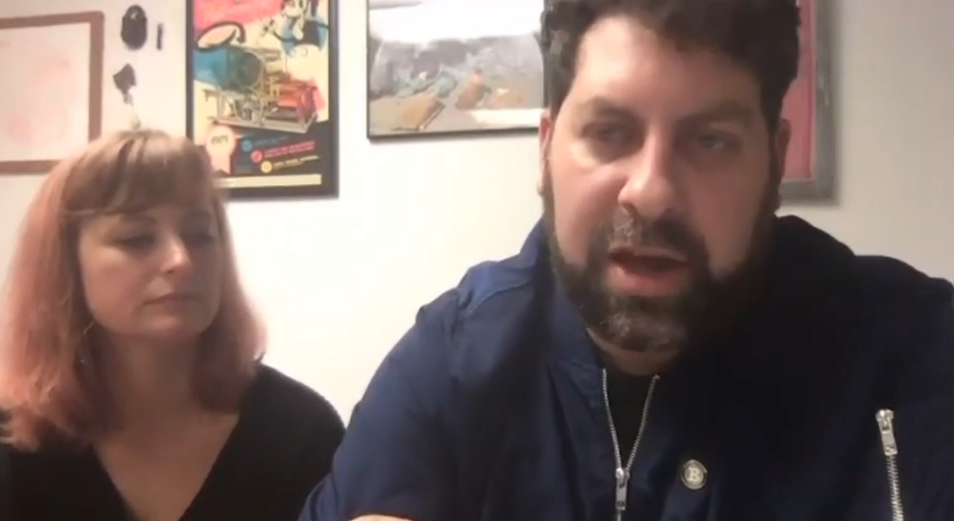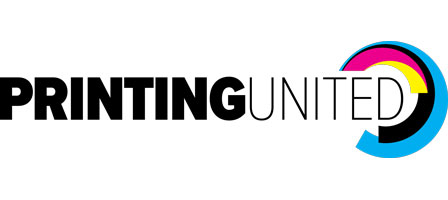Colin Powell once said, “If you are going to achieve excellence in big things, you develop the habit in little matters.”
In business, creating good habits creates a snowball effect. When you make little changes and stick with them, they become habits. Those practices, in turn, become the way you do business every day. And those small changes create more efficient workflow processes, which can make your business more profitable and productive.
In their PRINTING United Digital Experience presentation “Driving Profitability and Efficiency in Apparel Decoration,” Justin and Erin Moore, co-founders and co-owners of Barrel Maker Printing, Buffalo Grove, Ill., focused on how businesses can implement these small efficiency tweaks and make sure that they stick with them.
It’s hard to be productive without organization, and Justin Moore said that the first step in creating a long-lasting and effective system of profitability from a sales perspective is an organized schedule. For him, this means dedicating one day to the tasks that he doesn’t necessarily want to do, but are still crucial. This can be sending cold emails, making cold calls, etc. They call these not-so-fun but important tasks “eating the frog.”
“What I do is pick two days on the calendar,” Moore said. “Maybe the third day of the month and the 20th day of the month. ‘l block them in my calendar. Those are the days I go through and look at our ad words and think, ‘Should I be modifying anything? Are we receiving enough bites?’”
Every Thursday, he makes those dreaded cold calls.
The key is not only to put these in your schedule, but actually follow through. And, even if it doesn’t yield any big sales, you’ve still stuck with your plan and you’re chiseling out a better sales practice.

“I personally don’t [make cold calls] to try to necessarily get a sale,” Moore added. “I do it to sort of perfect my pitch and how I’m describing my company.”
There’s also the old saying, “Work smarter, not harder.”
Moore recommends thinking critically about when your specific customers might be looking to buy and acting accordingly. Especially if you have a wide range of clients from different industries, think about their own calendars and when they might have time and resources to allocate to you.
“Maybe you’re targeting a company that does a lot of marathons in the summer,” he said. “Hitting them up in the summer when they’re in the thick of it maybe isn’t the best time to get a response, or ask them to drop everything and order some swag. You want to get them four to six months earlier when they’re planning for their busy season.”
These sales tactics cover the intangible side of things, but Erin Moore offered plenty of suggestions to literally make your workflow more efficient on the decorating and production end of the business.
Imagine it like cleaning your house: You take things one room at a time. Moore said to do the same with your workflow efficiency. Handle one issue at a time to try to spot opportunities for improvement.
“Usually you start with the least efficient in your shop,” she said. “The low hanging fruit. Where do you see the most loitering, the most walking around, just by observing your staff?”
From there, you can find solutions that seem simple, but make a huge difference. If you’re screen printing, that may mean lorganizing inks by Pantone to make them easier to find, identifying commonly used inks or parts and literally bringing them closer to your press, or only using one brand of ink so you don’t have to teach different processes.
“The less change you create in your production environment, the more efficient your employees will be,” she said. “You can’t become good at something if it keeps changing.”
Most importantly, understand that these habits don’t kick in overnight. Human beings take a while to adjust, and you need to be patient.
“The manufacturing process of screen printing is a physical job,” Erin Moore said. “This is a manual labor job. The physicality of these tasks, it’s in people’s bodies. You can conceptualize in your mind why something might be more efficient, a new method might be more efficient. But until you repeat that over and over again, the physicality of your body is going to try to do it the original ways. You’re literally retraining people.”
It’s a test of will power, and the promise of delayed gratification if you start today. The best time to plant a tree was 20 years ago, as they say. The second best is today. Plant those seeds of efficiency and regimented productivity now. If you stick with it, your business will bloom for years to come.
Click here to view the entire session (free registration required) or click here for more information on the PRINTING United Digital Experience, including Apparel – Direct-to-Garment/Direct-to-Substrate Day (Monday, Nov. 9). The PRINTING United Digital Experience runs from Oct. 26 through Nov. 12 and is free to attend.



